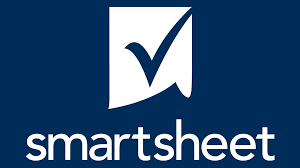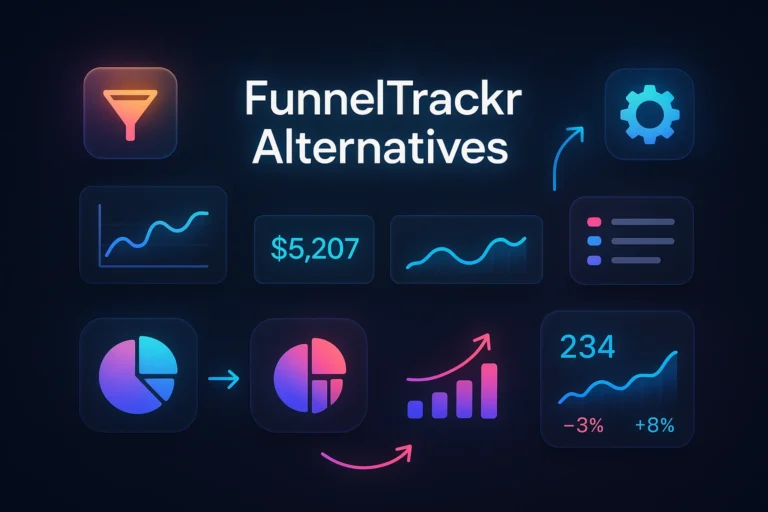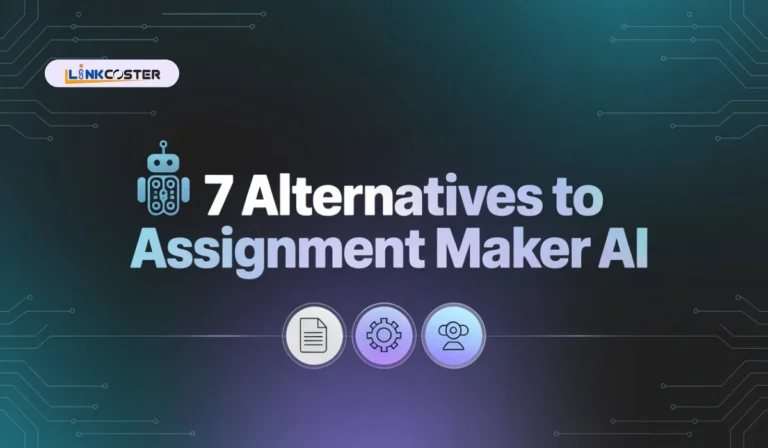7 BrandFloat Alternatives
If you’re reading this, there’s a good chance you’re searching for a resource management or scheduling alternative to BrandFloat. Maybe you want a platform that’s more robust, perhaps you need something that integrates better with your workflow, or you just want to ensure your agency or team is using the best software for its needs. Whatever your reason, you’re in the right place. This guide is going to walk you through everything you need to know about finding the perfect BrandFloat alternative—including detailed reviews, comparisons, and honest insights to help you decide.
Also read:
7 TrendHive Alternatives for Trend Discovery in 2025
7 EmailSpire Alternatives: Comprehensive Guide for 2025
7 ScrollMagnet Alternatives
7 CopyNest Alternatives: Top AI Writing Tools for 2025
7 AdCortex Alternatives: Top Competitors for Smarter Advertising
What to Look for in a BrandFloat Alternative
Let’s start with what matters the most: features and fit. Before even glancing at a comparison table, you need a clear sense of what your team actually needs in a resource management tool.
Essential Features for Resource Planning
When weighing different platforms, focus on these core features:
- Scheduling & Calendar Management: Can you easily allocate resources, view team availability, and avoid over-booking?
- Leave Management: Does the tool track vacations, sick days, or other absences so you’re never blindsided?
- Integrations & Automation: Will the tool play nice with your existing workflow apps like Slack, Trello, or Google Workspace?
- Time Tracking: Are you able to log billable/non-billable hours, monitor project budgets, and understand real-time progress?
- Reporting & Analytics: Do you get actionable data and customizable reports that actually help you manage, rather than just filling up your inbox?
Factors to Consider Before Switching
Deciding to switch software is a big deal. Besides the features, keep these points in mind:
- Team Size & Structure: Some tools are naturally better for small, agile teams, while others are designed for large, complex organizations with multiple departments.
- Budget & Pricing: Do you prefer a transparent flat rate, tiered pricing, or usage-based billing? Hidden costs can be a deal-breaker.
- Scalability & Support: Will the platform grow with you? Can you count on reliable customer support or documentation if things go sideways?
The 7 Best BrandFloat Alternatives
Based on hands-on research and countless user reviews, here are the top competitors to BrandFloat in 2025. Each one brings something unique, and I’ve broken down what makes them stand out.
1. Resource Guru

Resource Guru is a user-friendly and efficient resource scheduling tool known for its simplicity and speed. It features a highly intuitive drag-and-drop interface that allows managers to assign tasks and allocate resources effortlessly. The platform includes automated leave and absence management, which helps prevent booking conflicts and keep project timelines smooth. Its real-time reporting provides a quick way to monitor resource utilization, but its reporting depth may not meet the needs of very large or data-heavy teams. Resource Guru is ideal for teams and businesses looking for a hassle-free, fast onboarding tool that covers the essentials of resource scheduling without overwhelming complexity.
Key Features
Resource Guru is celebrated for its clean design and all-in-one scheduling power. At its core, it offers:
- Lightning-fast scheduling and drag-and-drop interface.
- Automated leave management to account for vacations or sick time.
- Real-time reporting for quick performance snapshots.
Pros & Cons
- Pros:
- Extremely intuitive and beginner-friendly.
- Quick initial setup and minimal onboarding needed.
- Scales effortlessly with your business.
- Cons:
- Reporting isn’t as granular as what some larger agencies might crave.
- Limited direct integrations compared to powerhouses like ClickUp.
2. Teamdeck

Teamdeck caters primarily to small agencies and teams that want straightforward resource and time management without the clutter of unnecessary features. Its visual calendar and resource scheduling features are clear and easy to navigate, making it highly accessible even for users without technical backgrounds. Alongside time tracking and absence management, Teamdeck focuses on minimizing the administrative overhead. However, its reporting and budgeting functionalities tend to be more basic compared to enterprise tools, and it offers fewer integrations, which may limit its usefulness as teams scale. It’s best suited for boutique agencies or HR professionals who value simplicity and affordability.
Key Features
Teamdeck finds its niche with smaller agencies and teams that value simplicity:
- Visual resource scheduling with an easy-to-read calendar.
- Integrated time tracking and absence management.
- Super-fast onboarding—be up and running in minutes.
Pros & Cons
- Pros:
- User-friendly design great for non-techies.
- Streamlined to focus on what resource managers truly need.
- Affordable for small teams.
- Cons:
- Reporting and budgeting functionalities are quite basic.
- Fewer integrations than enterprise-grade platforms.
3. Smartsheet

Smartsheet is a robust project and work management platform well-suited for large and complex organizations. It offers advanced automation features that let teams build workflows, automate repetitive tasks, and generate multi-project dashboards for comprehensive oversight. Its wide array of integrations, connecting with popular tools like Slack and Salesforce, makes it a powerful hub for enterprises managing many simultaneous projects. Although Smartsheet excels at overall project management, its resource scheduling capabilities are somewhat less specialized and can feel limited compared to dedicated resource tools. It’s perfect for enterprises requiring powerful automation and governance in their workflows.
Key Features
Smartsheet takes project and work management to the next level, especially for larger, more complex organizations:
- Advanced workflow automation capabilities.
- Wide range of integrations—from Slack to Salesforce.
- Multi-project dashboards and reporting tools.
Pros & Cons
- Pros:
- Exceptionally powerful feature set.
- Scalable for teams of any size.
- Robust templates and workflow customization.
- Cons:
- Resource scheduling is more basic compared to specialized tools.
- Steeper learning curve for new users.
4. Runn
Runn distinguishes itself by emphasizing performance, budgeting, and profitability insights alongside resource scheduling. It provides forecasting tools that help businesses predict project costs and resource needs well in advance, combined with detailed timesheets to track hours worked. Deep integrations with accounting and billing software streamline financial oversight, making Runn especially appealing to consulting agencies and service-oriented businesses focused on profitability. While reporting customization is not its strongest suit, Runn’s free tier for small teams and strong focus on business health metrics make it a practical choice for firms prioritizing financial visibility and resource efficiency.
Key Features
Runn sets itself apart with its focus on budgets, performance, and profitability:
- Resource scheduling with forecasting capabilities.
- Built-in timesheets for effort tracking.
- Deep integrations with billing and financial tools.
Pros & Cons
- Pros:
- Excellent for consulting agencies or service businesses.
- Offers a free plan for teams under five users.
- Puts profitability and forecasting front and center.
- Cons:
- Reporting customization is somewhat limited.
- May feel complex for teams only needing a basic tool.
5. Productive
Productive is an all-encompassing operations management platform crafted with agencies in mind. Beyond resource scheduling, it integrates budgeting, invoicing, sales pipeline tracking, and custom reporting into one centralized dashboard. This breadth of features helps agencies gain full control over their operations, from client onboarding to project delivery. While this richness offers great power, it may prove overwhelming for teams only needing basic scheduling, and initial setup can take longer. Productive is ideal for agencies ready to streamline not just scheduling but also their financial and operational processes through a single platform.
Key Features
Productive promises to be the all-in-one platform agencies have been waiting for:
- Operations management—everything from sales to invoicing.
- Powerful budgeting and financial tracking tools.
- Custom dashboards and in-depth reporting.
Pros & Cons
- Pros:
- Feature-rich platform designed for agencies.
- Handles multiple budget types natively.
- Automates much of the administrative overhead.
- Cons:
- The sheer scope can feel overwhelming if you only need scheduling.
- Takes more time to implement and train teams.
6. Kantata (formerly Mavenlink)
Kantata (formerly Mavenlink) is geared towards professional services firms with a strong emphasis on integrating project management, resource planning, and business intelligence. It supports detailed project planning and execution with a people-centric focus, providing insights that align workforce capacity with project demands. Extensive workflow automation and strong reporting capabilities make it highly suitable for consultancies and client-based businesses that require end-to-end visibility from sales pipeline through project completion. However, Kantata may be more complex and expensive than necessary for smaller or product-focused teams.
Key Features
Kantata brings together powerful project management and resource allocation with a people-first philosophy:
- Deep integration between project planning and resource scheduling.
- Extensive business intelligence features.
- Workflow automation tailored for professional services.
Pros & Cons
- Pros:
- Best-in-class for client service operations and consultancies.
- Suite of tools built for services businesses—not just product companies.
- Strong reporting and analytics.
- Cons:
- Designed primarily for consultants and client-facing teams.
- May be overkill for smaller product-focused companies.
7. ClickUp

ClickUp is a highly customizable all-in-one productivity platform merging project management, task tracking, and resource scheduling into a unified workspace. It offers robust collaboration tools including real-time chat, document sharing, and workload visualization, along with automation features that can be tailored to many different workflows. The sheer volume of features can be overwhelming initially, but teams that need flexibility and scalability—from startups to large enterprises—will benefit greatly. ClickUp’s premium plans unlock the most powerful capabilities, making it a favorite choice for teams looking for a flexible platform that grows with their needs.
Key Features
ClickUp is nothing short of a productivity powerhouse:
- Combines project management, task management, and resource scheduling.
- Detailed workload visualization and collaboration features.
- Powerful automation and a rapidly growing plugins ecosystem.
Pros & Cons
- Pros:
- Incredibly flexible for any workflow.
- Great collaboration tools—real-time chat, docs, and more.
- Grows with your team, from startups to enterprises.
- Cons:
- Can feel overwhelming due to the sheer breadth of tools.
- Some advanced features are only on premium plans.
Comparison Table: 7 BrandFloat Alternatives at a Glance
Below is a side-by-side comparison to help you quickly scan the best tool for your needs.
| Alternative | Best For | Key Features | Pros | Cons | Pricing Model |
|---|---|---|---|---|---|
| Resource Guru | All team sizes | Scheduling, leave, reporting | User-friendly, fast setup | Basic reporting | Tiered/monthly |
| Teamdeck | Small agencies | Time tracking, visual UI | Simple, affordable | Limited integrations | Usage-based |
| Smartsheet | Enterprises | Automation, dashboards | Flexible, powerful integrations | Basic scheduling | Subscription |
| Runn | Service agencies | Forecasting, budgeting | Free starter, profit focus | Custom reporting limited | Free/premium |
| Productive | Agencies | Ops mgmt, budgets | Rich features, multi-budget | Steeper learning curve | Tiered/monthly |
| Kantata | Professional services | PSA, BI, workflows | Services-focused, strong BI | Best for client ops | Quote-based |
| ClickUp | Flexible teams | All-in-one, automation | Most customizable, scalable | Feature overload possible | Free/premium |
How to Choose the Right BrandFloat Alternative
Picking the right tool isn’t about grabbing the one with the most features—it’s about finding the tool that fits your business like a glove.
Matching Software to Business Needs
- Agencies & Consultancies: Seek out platforms designed with agencies in mind. Productive, Kantata, and Runn shine here, with deep budgeting and invoicing features.
- Enterprise-Grade Operations: Companies needing complex workflows will love Smartsheet for its automation, while ClickUp stands out for its scalability and flexibility.
- Ease of Use: If you want minimal onboarding and a clean, straightforward interface, Resource Guru or Teamdeck are strong candidates.
- Customization vs. Simplicity: Tools like ClickUp offer the highest degree of customization, but if that feels overwhelming, opt for something more streamlined like Teamdeck.
Tips for Evaluating and Onboarding
- Always Start with a Free Trial: Most of these tools offer demos or trial periods—test them with real project data and involve your team from the start.
- Plan Your Onboarding: Choose a tool with solid documentation and responsive support. Look for onboarding resources like video tutorials, webinars, or community forums.
- Think Long-Term: Your business will grow and your needs will evolve. Aim for a platform that scales with you, instead of having to switch again in a year.
Conclusion
The landscape for resource scheduling and project management tools is more exciting (and overwhelming) than ever in 2025. BrandFloat is a solid platform, but there are plenty of fantastic alternatives—each one bringing its own flavor to the table.
Whether you prioritize usability, depth, integrations, or pricing, this guide should help you cut through the noise and zero in on what truly matters. Don’t hesitate to try a couple of these platforms—most offer easy onboarding and flexible trial options.
In the end, the “best” tool is the one that helps your team work smarter, not harder. So stay curious, keep experimenting, and you’ll find the perfect fit!
Frequently Asked Questions (FAQ)
1. Who should use a BrandFloat alternative?
Honestly, anyone who feels BrandFloat doesn’t fully meet their needs. This could be due to missing features, difficulty integrating with other tools, lack of scalability, pricing changes, or a desire for stronger support. Agencies, consultancies, HR teams, and enterprises are all strong candidates for exploring alternatives.
2. What integrations are commonly required?
It depends on your stack, but the most commonly requested integrations are:
- Email and calendar apps (like Google Calendar, Outlook)
- Communication tools (Slack, Microsoft Teams)
- Project management suites (Asana, Trello)
- Time tracking and invoicing systems







